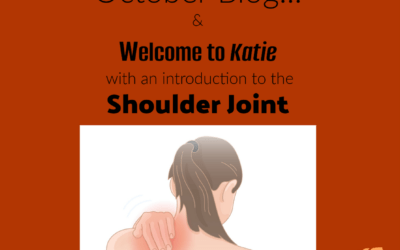Welcome Ania Williamson MCSP
This month we are putting the spotlight on Animal Physiotherapy whilst introducing the newest member of our team, Ania Williamson.
A little about me…
I qualified from The University of the West of England, Bristol with a First Class Degree in Physiotherapy in 2006. I have since worked for 15 years as a Musculoskeletal Physiotherapist in the NHS, as well as private practice. I enjoy treating most problems as the variety is the best part of the job! But do have a particular interest in spinal and lower limb biomechanics, and a great deal of experience treating spinal and shoulder issues. Over the years I have completed post graduate Masters level training in Advanced Clinical Practice and X-rays interpretation, as well as further training on Spinal MRI interpretation.
Alongside my passion for traditional Musculoskeletal Physiotherapy, I also have a special interest in horses and horse riding, as well as animals in general. In 2011 I completed a Masters Degree in Veterinary Physiotherapy at The Royal Veterinary College. This allowed me to become an ACPAT Veterinary Physiotherapist treating both the horse and rider, as well as a variety of other animals including dogs, cats, rabbit and even a skunk once!
Animal Physiotherapy…
Treating animals is both similar, and yet utterly different to treating people. The types of conditions they can develop are similar, and their anatomy is comparative to human beings. We all have vertebrae, albeit in differing numbers and in different orientations. Both animals and human beings have the same general types of bones, joints and muscles with some of the main skeletal differences occurring in the lower leg. For example, where humans have developed hands with fine motor control and dexterity, horses have developed an elongated single digit ending in a hoof (imagine weightbearing on just your 3rd finger!). This arrangement allows the horse to have incredible speed and power despite the bulk of its body.
Image from: http://figuredrawingdotinfo.blogspot.com/2016/06/comparative-anatomy-thoughts-on.html accessed 21st Sept 2021
The conditions you meet are also similar, for example osteoarthritis, tendon issues, sports injuries, muscular discomfort, disc prolapses, spinal injuries, fractures, post operative care e.g. total hip replacements and after cruciate ligament ruptures
The fundamental basis of what you want to achieve also remains the same, however the way in which you achieve these goals is where the main differences lie as you cannot just tell an animal to move their knee 10 times 3 times a day! You often need to think laterally about how to achieve something, and work within the limits of that species and specific animal/owner combination. For example, what you can achieve with a young excitable puppy will be very different to an old Great Dane!
To give an example, one may want to strengthen a hind limb of a dog in a weightbearing position. A few ways you could achieve this would be to pick up a leg and hold that position, or tickle their feet to encourage them to retract the limb, putting a scrunchie/boot on the limb to encourage the animal to lift it higher. You could step over poles, use wobble boards/cushions, gym balls, hill work etc. This coupled with repetition and a progressive strengthening programme will gradually strengthen the limbs.
In many cases it can be more difficult to identify a cause for discomfort, as they cannot tell you where it hurts. A collaborative approach with other professions such as Veterinarians, Dentists, Farriers, Saddle fitters, Behaviouralists is often required, as well as high specialised palpation and assessment skills.
So how do you become a Veterinary Physiotherapist?
Most Chartered Physiotherapists will go on to become an ACPAT and/or RAMP Physiotherapist if they choose to specialise in Veterinary Physiotherapy. To qualify as an ACPAT Physiotherapist first a degree in human Physiotherapy is required followed by a Masters or PGDip in Veterinary Physiotherapy. Its an extremely rewarding and fun job, where truly no two patients are the same!
Meet Rusty the Cocker Spaniel
Lovely little Rusty was first referred to Physiotherapy following a traumatic Spinal fracture which was surgically stabilised in 2020.
When he first came to Physiotherapy he was unable to weight bear for long on his back legs and his owner needed to use a sling under his tummy to support him. Physiotherapy has mainly consisted of home exercises to help strengthen his core muscles and limbs, improve his balance and retrain normal movement. He has also had some hands on treatment and later on hydrotherapy to help build strength and condition.
Thanks to the dedication of his owner to doing his Physiotherapy with him, Rusty is now able to run off lead and have a full and amazing life.
Meet Murphy the Gentle Giant
Murphy was first referred to Physiotherapy as his owner noticed he was having difficulty bending his neck side the side. He had Veterinary Investigations first which showed some arthritic changes in his neck as well as a possible old trauma to his withers.
He has been treated with regular soft tissue work and joint mobilisation, as well as an exercise programme. His main exercises are neck stretches using carrots to encourage him to move in different directions – he enjoys his Physio very much!! J Murphy has responded well to Physiotherapy with significant improvements in his range of movement and pain.
If you would like any more information on Veterinary Physiotherapy, the ACPAT or RAMP website is an excellent place to start https://www.acpat.org/
Mrs Ania Williamson MCSP
ACPAT and RAMP Chartered Physiotherapist
07708807811
#ashbournephysio&sportsinjuriescentre #ashbournephysio #physio #hiltonphysiotherapycentre #hiltonphysio #ashbourne #hilton #physiotherpay #animalphysio #animalphysiotherapy #equinephysio #physotherapist #biomechanics #humanphysio #hydrotherapy #horsephysio #dogphysio #catphysio #rehab #animalrehabilitation #horserehab #rehabilitation #horseinjury #doginjury #catinjury #lameness #tendoninjury #spinalinjury #fractures #sportsinjures #ligamentinjury #tendonstrain #ligamentstrain #strengtheningexercises #vets




